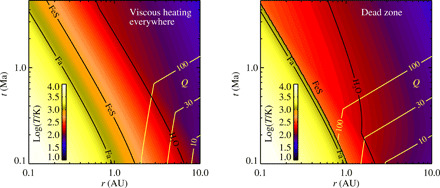Fig. 2. Temperature maps of the inner 10 AU of an evolving protoplanetary disc.

The left plot shows the temperature when viscous heating is applied everywhere in the protoplanetary disc. In the right plot, we assume that viscous heat is only released when the magnetorotational instability is active above a temperature of 800 K—the remaining disc is magnetically dead and hence only heated by the stellar irradiation. Three contour lines for the Toomre Q parameter are indicated in yellow; values above ≈1 imply gravitational stability and hence validate our neglect of heating from gravitoturbulence. We overplot the sublimation lines of water (H2O) and the refractory minerals troilite (FeS) and fayalite (Fe2Si04). In the more realistic case where viscous heating is provided only where the magnetorotational instability is active (right plot), the primordial water ice line sits in the region between 1.2 and 2.0 AU in the first million years of disc evolution. This is the likely site for formation of the first generation of planetesimals in the inner Solar System.
